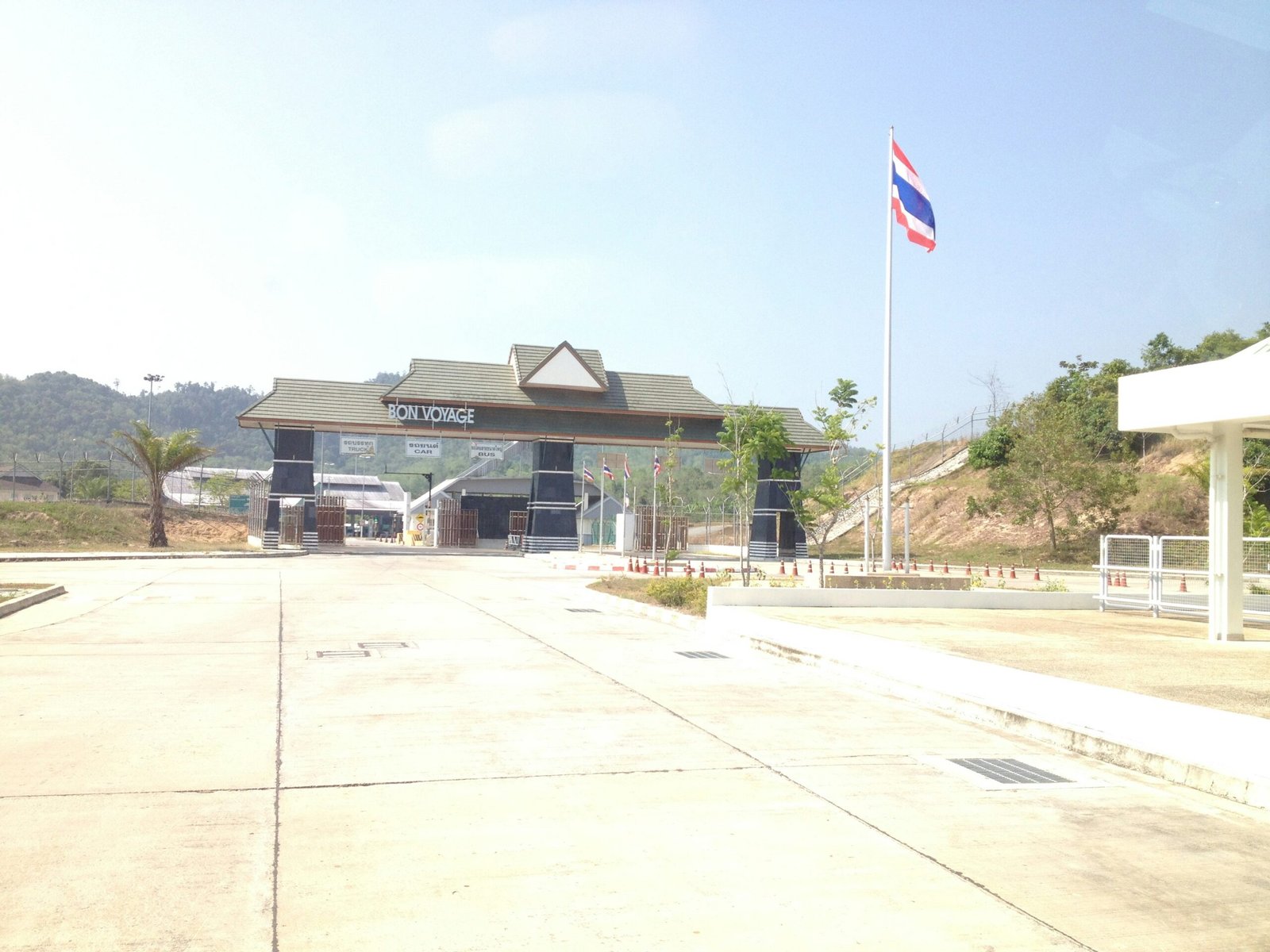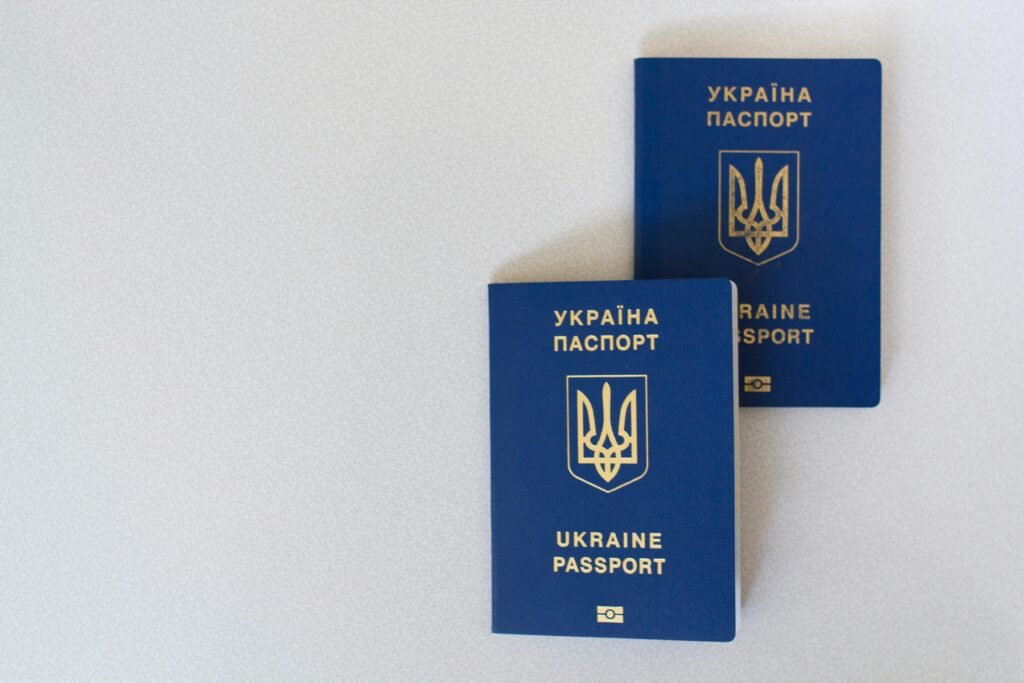Introduction to Central Asia’s Visa Landscape
Central Asia, a region rich in history and cultural diversity, comprises five main countries: Kazakhstan, Kyrgyzstan, Tajikistan, Turkmenistan, and Uzbekistan. Each of these nations possesses its own distinct visa requirements, reflecting their individual diplomatic relations and international policies. For travelers planning to explore this unique region, understanding the varying visa landscapes is crucial to a seamless travel experience. By familiarizing oneself with the specifics of each country’s entry requirements, one can significantly reduce the likelihood of complications at border crossings.

The general stance on visas in Central Asia varies considerably. For instance, Kazakhstan and Kyrgyzstan are known for their relatively lenient visa policies, often allowing visitors from numerous countries to enter without the need for a visa or offering e-visa options. Conversely, Turkmenistan is noted for its more restrictive entry policies, typically requiring visitors to obtain an official visa prior to arrival. This stark contrast among neighboring countries makes it imperative for travelers to research and analyze the specific regulations pertinent to their nationality and planned destinations.
An integral part of understanding the visa system in Central Asia is recognizing the impact of international relations on border policies. Historical connections, trade agreements, and political alliances play a significant role in shaping visa regulations. For example, countries that share close ties, such as Kazakhstan and Kyrgyzstan, may implement more flexible visa regimes for citizens of one another’s nations. Conversely, strained diplomatic relations may lead to stricter visa requirements, impacting how easily travelers can cross borders. Consequently, remaining up-to-date with current geopolitical developments can enhance the preparedness of any traveler venturing into this fascinating region.
Understanding Visa Types in Central Asia
When planning your journey to Central Asia, it is crucial to understand the various types of visas available to travelers. Primarily, the three main categories are tourist visas, business visas, and transit visas, each serving distinct purposes and requiring different documentation and processes.
A tourist visa is the most commonly sought after by travelers aiming to explore the cultural and natural wonders of countries in Central Asia. This type of visa typically allows visitors to stay for a specified duration, often ranging from 30 to 90 days, depending on the country of destination. To obtain a tourist visa, applicants usually need to submit a completed application form, a valid passport with at least six months remaining before expiration, recent passport-sized photographs, and proof of accommodation such as hotel bookings. In some cases, additional documents might be required, such as an itinerary outlining planned destinations or travel insurance.

On the other hand, a business visa is intended specifically for individuals traveling for work-related purposes, such as attending meetings, conferences, or conducting business transactions. The application process for a business visa can be more complex, as it typically necessitates an invitation from a local business or organization in the destination country. Documentation required often includes a valid passport, photographs, business registration documents, and sometimes proof of sufficient financial resources to support your stay.
A transit visa is essential for travelers who are passing through a country in Central Asia on their way to a different destination. This type of visa generally allows for a shorter stay, often up to three days, and may not require as detailed documentation as the other two visa types. However, specific requirements can vary significantly between countries. It is advisable to research the transit visa stipulations of the particular nation you plan to cross through.
Application Process: Step-by-Step Guide
Applying for a visa to Central Asian countries involves several critical steps that must be followed to ensure a successful application. The process generally begins with researching the specific visa requirements for the country you intend to visit, as each nation within Central Asia has its own guidelines and stipulations. This initial step can be conducted through official government websites or consulate pages, which provide detailed information concerning visa categories, validity periods, and entry restrictions.
Once you have a clear understanding of the requirements, the next step is to complete the visa application form. This form is typically available online or at the nearest embassy or consulate. When filling out the application, it is imperative to provide accurate and truthful information. Any discrepancies can result in delays or rejections. Ensure that you review all fields and sections thoroughly before submission.
Following the completion of the application form, you will need to gather the necessary documentation. Commonly required documents include a valid passport with appropriate validity, passport-sized photographs, proof of accommodation, a travel itinerary, and travel insurance. Depending on the country, additional documents such as proof of financial means or an invitation letter may also be necessary. It is essential to check the specific requirements for the relevant country as these can vary significantly.
Once all documentation is in order, submit your application either at the embassy or consulate or through an online portal, if available. Be prepared to pay the applicable visa fees, which can vary based on the type of visa and the processing speed you choose. After submission, it is advisable to keep track of your application status, as processing times can differ for each country. Carefully following these outlined steps will increase your chances of a hassle-free visa application for your travels in Central Asia.
Required Documents: What You Need to Prepare
When planning a trip to Central Asia, understanding the necessary documentation for visa applications is crucial. Different countries in the region have specific requirements, but certain documents are universally recognized as essential for obtaining a visa. First and foremost, a valid passport is required. Ensure that your passport has at least six months of validity remaining from your planned entry date, as many countries enforce this rule strictly. This period can vary, so it’s wise to check the requirements for each destination.
In addition to a passport, applicants typically need recent passport-sized photographs. The specifications for these photographs may differ by country, so it is important to verify the size and background color requirements ahead of time to avoid delays in processing your visa application. Alongside photographs, some countries may require invitation letters from a host or verification from a travel agency as part of the application process. These letters should clearly state the nature of your visit, be it business or tourism.
Moreover, a detailed travel itinerary is often necessary. This itinerary should outline your travel plans, including entry and exit dates, destinations within Central Asia, and modes of transportation. Proof of accommodation is also integral, as it serves to validate your stay. Hotel reservations or an invitation from a resident can be beneficial. When preparing these documents, ensure to gather them well ahead of your planned travel date.
To streamline the visa application process, consider checking the official consulate or embassy website of the country you intend to visit. They often provide updated information regarding the specific requirements, which can simplify the preparation process and help avoid potential issues. Ultimately, meticulous organization and thorough preparation are the keys to a successful visa application for your journey through Central Asia.
Navigating Bureaucracy: Dealing with Local Authorities
Traveling in Central Asia presents unique challenges, particularly regarding the bureaucratic processes involved with local authorities. Navigating the administrative landscape of this region can be daunting, as each country has its specific laws and regulations. It is essential for travelers to be informed about local procedures, especially when it comes to visa applications, permits, and any necessary bureaucratic interactions.

One common challenge faced by travelers is the language barrier when dealing with embassies or consulates. In many cases, local bureaucrats may not speak English fluently, making clear communication vital. To mitigate misunderstandings, having essential phrases translated into the local language may facilitate smoother interactions. Moreover, using translation apps can prove beneficial, providing immediate assistance with communication. It is often advisable for travelers to remain calm and patient, understanding that bureaucratic processes can vary in time and efficiency.
Furthermore, understanding the required documentation is crucial. Travelers should prepare for potential requests for various forms of identification, travel itineraries, or proof of accommodation. It is prudent to keep copies of all important documents, which can expedite the process if original papers are misplaced or questioned. Sometimes, travelers may encounter unexpected requests for bribes or tips, although such practices are illegal. It is advisable to remain firm in politely declining and, if necessary, seek assistance from a trusted local or embassy representative.
In addition, keeping abreast of changing laws can be beneficial. Central Asian countries can implement new regulations swiftly, and travelers should regularly check official government websites or forums for the latest updates. Utilizing social media or local travel blogs may also provide insights into the current bureaucratic landscape, ensuring that travelers are well-prepared before embarking on their journey.
Border Crossings: Preparing for the Journey
Border crossings in Central Asia can be an intriguing yet challenging aspect of travel in this region. It is crucial for travelers to be well-prepared for the journey to ensure a smooth transition between countries. Prior to approaching a border, travelers should familiarize themselves with the specific requirements for each crossing, which may vary significantly depending on the country. Documentation, such as valid passports, visas, and sometimes health certificates, plays a vital role in facilitating entry.
Upon arrival at a border, travelers can typically expect to undergo a series of checks. Immigration officers will examine documents and may ask questions about the purpose of the visit. It is advisable to be both respectful and patient during this process, as some borders may have long queues and delays exacerbated by under-resourced staff or high volumes of travelers. Engaging with border officials courteously can assist in speeding up the process.

Customs regulations are another integral part of the border crossing experience. Each Central Asian country has specific rules regarding the importation of goods, and travelers are encouraged to declare any items that may be subject to duty. Knowing the limits on currency, alcohol, and tobacco can be essential to avoid unnecessary fines or confiscation. Misunderstandings regarding customs can lead to significant delays, so it is best to do thorough research ahead of time.
To minimize disruptions, travelers should pack appropriately and keep necessary documents easily accessible. Utilizing packing cubes might facilitate efficient organization. Additionally, remaining flexible with one’s travel schedule can help accommodate any unexpected delays experienced at borders. Overall, with adequate preparation and awareness, travelers can navigate border crossings in Central Asia with confidence and ease.
Common Issues and How to Solve Them
Traveling in Central Asia can be an exhilarating experience, but it may also present travelers with various challenges related to visas and border crossings. Understanding common issues such as visa denials, lengthy processing times, and delays at border checkpoints can help alleviate stress during your journey. It is crucial to be prepared and know how to navigate these potential problems effectively.
One of the most frequent issues encountered by travelers is visa denial. This can occur due to incomplete application forms, lack of supporting documentation, or discrepancies in information. To reduce the likelihood of a visa denial, it is essential to meticulously follow the application guidelines provided by the consulate or embassy. Before submitting your application, double-check that all required documents are included and that there are no inconsistencies, such as differences in your travel itinerary.
Delays at border crossings can also be a major concern, especially during peak travel seasons. Often, these delays are caused by bureaucratic processes or an influx of travelers. To minimize the risk of prolonged waits, travelers should aim to arrive early at border crossings and be patient. Familiarizing yourself with the specific entry requirements for each country, including customs regulations, can expedite the process. Additionally, understanding local languages or having a translation app could prove helpful in communicating with border officials.
In cases where you find yourself facing unexpected challenges, such as an extension of your stay or an error in your visa, contacting the local embassy or consulate may provide immediate assistance. They can offer guidance on the necessary steps to resolve the issue and ensure compliance with local laws. Being proactive and informed can significantly enhance your travel experience in Central Asia, enabling you to handle hurdles smoothly and efficiently.
Travel Insurance: Is It Necessary?
Travel insurance plays a crucial role for anyone planning a trip to Central Asia, particularly when navigating visa requirements and border crossings. The unique challenges of this region, including differing healthcare standards and the potential for unexpected situations, make it essential to have adequate coverage. Travel insurance can offer significant peace of mind, protecting you against unforeseen events that might otherwise disrupt your journey.
When traveling to Central Asia, you might encounter a variety of challenges, such as lost luggage, trip cancellations, or emergencies requiring medical assistance. With varying levels of healthcare services available in different countries, having a solid travel insurance policy can mitigate these risks. For example, if you face a medical emergency while in a remote area, insurance can cover costs related to evacuation and provide access to quality healthcare, which is invaluable in such scenarios.
Moreover, many travelers often overlook the importance of travel insurance in relation to visas. Certain countries may require proof of insurance as a condition for visa issuance. This requirement underscores the importance of having it not only for health and safety but also for compliance with local regulations. As you prepare your documentation for border crossings, ensure that your travel insurance policy meets any specified criteria.
When selecting a travel insurance policy, look for coverage that includes medical expenses, trip cancellation, and lost or stolen belongings. Additionally, consider the policy’s terms regarding pre-existing conditions, and ensure it provides adequate support for the specific regions and activities involved in your travels. Ultimately, investing in a comprehensive travel insurance plan is a wise decision for anyone embarking on an adventure through Central Asia, safeguarding your experience as you navigate the complexities of visas and borders.
Conclusion: Final Tips for Smooth Travels
Traveling through Central Asia can be a rewarding experience, filled with rich cultures, breathtaking landscapes, and historical wonders. To ensure that your journey is as seamless as possible, it is crucial to keep in mind several key points regarding visa applications and border crossings.
First and foremost, it is essential to familiarize yourself with the visa requirements of each country you plan to visit. Visa policies in Central Asia can vary significantly, so it is advisable to check the latest updates from official government resources or reliable travel websites. Consider obtaining visas well in advance to avoid any unforeseen delays. Additionally, some countries in the region offer e-Visa options, which can simplify the application process.
Secondly, while traveling between borders, be prepared for differing entry and exit procedures. Ensure that you have all necessary documentation on hand, including your passport, visa, and any supporting documents, such as travel itineraries or accommodation bookings. This preparation can help expedite the process at border crossings.
Moreover, it is beneficial to stay informed about the local customs and practices at every border. Each country may have unique processes or regulations regarding currency exchange, customs declarations, and even permissible items. Understanding these nuances can facilitate smoother transitions between destinations.
Finally, maintaining an attitude of flexibility and patience is essential when navigating the borders of Central Asia. Delays can occur for a variety of reasons, ranging from administrative checks to transportation issues. Therefore, being well-prepared and remaining calm during your travels will enhance your overall travel experience. With these tips in mind, you can embark on your adventure across Central Asia with confidence.
